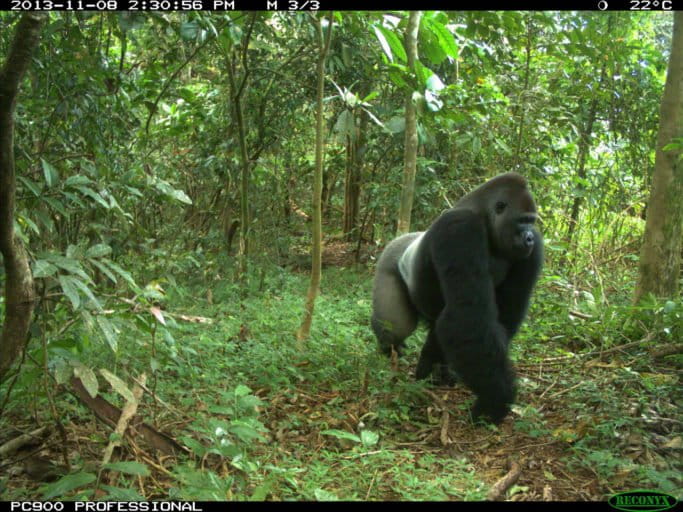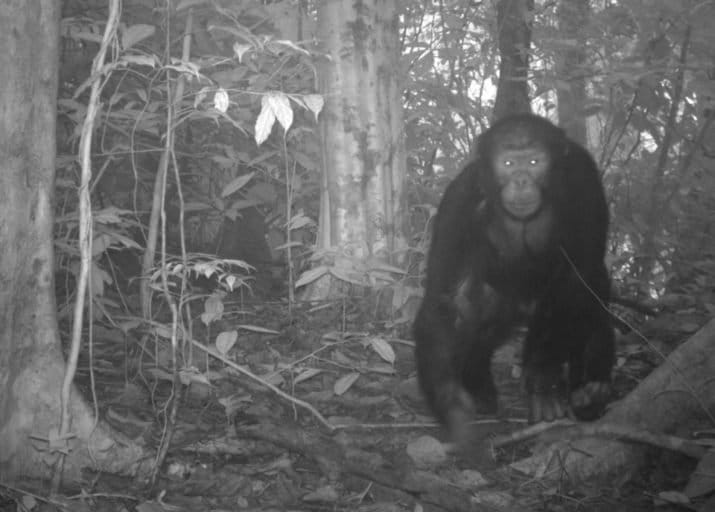- The superhighway project, intended to stimulate the Cross River state economy, will no longer include a 20-kilometer-wide buffer zone along its 260-kilometer length.
- The NGO Wildlife Conservation Society said minimizing the destruction necessary for the buffer zone was an important step, but that it will still disrupt communities and wildlife.
- Representatives of the Cross River governor, Ben Ayade, told the media that they intended to move forward with the superhighway despite the criticism.
A state government in Nigeria has announced that it will scale back plans to create a buffer zone along its embattled 260-kilometer (162-mile) superhighway project, which conservation groups have warned will cut through communities and the habitat of endangered animals, such as the Cross River gorilla (Gorilla gorilla diehli).
Cross River state officials announced on Feb. 15 that crews will clear only 140 meters (459 feet) of forest for the length of the road, not the 20 kilometers (12.4 miles) – 10 kilometers (6.2 miles) on each side – they had originally planned. The Wildlife Conservation Society (WCS) applauded the move but wants to see more changes.
“We call on the government to reroute the highway away from vulnerable villages and rainforests,” said John Calvelli, executive vice president for public affairs at WCS, in a press release.

“[T]he government must ensure that this project does not imperil communities and threatened species,” Calvelli added.
The six-lane superhighway, which would connect the inland cities of Katsina Ala and Ikom with the port of Calabar, is seen by proponents as vital to Cross River state’s economy.
“We need to open the horizon to get teeming young people employed,” said Ben Ayade, the state’s governor, in a speech at a groundbreaking ceremony for the project in 2015.
“It became imperative that we reconstruct a new means of production,” of which the superhighway would be a critical component, Ayade said.
Ayade did not respond to several requests from Mongabay for an interview regarding the decision to reduce the buffer. However, John Inyang, who heads Cross River state’s Commission of Land and Housing, said the Ayade Administration was working on alternative ways to push the highway construction forward, if the Nigerian federal government doesn’t approve the environmental impact assessment by March.

“[In order] to ensure the success of the project, we have sacrificed the [10-kilometer buffer], limiting ourselves to 70 meters,” Inyang said at a press conference, according to Leadership, a Nigerian newspaper. He added that opponents now “have nothing to say against the super highway rather than to cooperate with us.”
The construction is expected to take four to five years, sources told Mongabay in 2015.
The economics of the proposed road has two sides: It could mean an influx of jobs and income for the state. But, opponents say, it also has the potential to disrupt communities and harm wildlife.
The highway would “significantly impact the livelihoods” of some 180 indigenous communities in the area, WCS said. The Ekuri Initiative, a forest stewardship organization, collected 253,000 signatures for a petition against the construction and took them to Nigerian President Muhammadu Buhari in 2016. WCS has collected more than 105,000 signatures through a petition for the Nigerian embassy in Washington, D.C.
As towns spring up along the road, they could also entice people to move there, said Odey Oyama, executive director of the Cross River-based Rainforest Resource and Development Centre, in a 2015 interview.
“If that happens, you can be sure that the entire forest will be gone in no time,” Oyama said.
Research has shown that new communities next to roads often expand into surrounding forests for agriculture. And upticks in hunting and wildlife-vehicle collisions could spell trouble for animals living in the nearby Cross River National Park.

The affected section of the park, known as the Oban Division, is home to 3,000 square kilometers (1,158 square miles) of lowland rainforest. It’s also habitat for a host of IUCN-listed Endangered and Critically Endangered wildlife, including the Nigeria-Cameroon chimpanzee (Pan troglodytes ellioti), Preuss’s red colobus monkey (Piliocolobus preussi), and the drill (Mandrillus leucophaeus), as well as the Cross River subspecies of western gorilla. Researchers figure that there are fewer than 300 of these animals alive in the wild.
“The construction of a large highway through wildlife-rich forests will have a devastating impact on many species,” said Andrew Dunn, WCS country director for Nigeria, in the press release.
He added, “The best decision the government can make for local communities and wildlife would be to move the project away from Nigeria’s most biodiverse forests.”

CITATIONS:
- Bergl, R.A., Dunn, A., Fowler, A., Imong, I., Ndeloh, D., Nicholas, A. & Oates, J.F. (2016). Gorilla gorilla ssp. diehli. (errata version published in 2016) The IUCN Red List of Threatened Species 2016: e.T39998A102326240. Downloaded on 21 February 2017.
- Laurance, W. F., Goosem, M., & Laurance, S. G. W. (2009). Impacts of roads and linear clearings on tropical forests. Trends in Ecology & Evolution, 24(12), 659–669. https://doi.org/http://dx.doi.org/10.1016/j.tree.2009.06.009
- Oates, J.F. & Butynski, T.M. (2008). Mandrillus leucophaeus. The IUCN Red List of Threatened Species 2008: e.T12753A3377185. http://dx.doi.org/10.2305/IUCN.UK.2008.RLTS.T12753A3377185.en. Downloaded on 21 February 2017.
- Oates, J.F., Doumbe, O., Dunn, A., Gonder, M.K., Ikemeh, R., Imong, I., Morgan, B.J., Ogunjemite, B. & Sommer, V. (2016). Pan troglodytes ssp. ellioti. The IUCN Red List of Threatened Species 2016: e.T40014A17990330. http://dx.doi.org/10.2305/IUCN.UK.2016-2.RLTS.T40014A17990330.en. Downloaded on 21 February 2017.
- Oates, J.F., Struhsaker, T., Morgan, B., Linder, J. & Ting, N. (2016). Piliocolobus preussi. The IUCN Red List of Threatened Species 2016: e.T41026A92632162. http://dx.doi.org/10.2305/IUCN.UK.2016-1.RLTS.T41026A92632162.en. Downloaded on 21 February 2017.
FEEDBACK: Use this form to send a message to the author of this post. If you want to post a public comment, you can do that at the bottom of the page.